Implant Dentists in Lilburn GA
Dental implants are the closest thing to nature itself when it comes to replacing missing teeth. For a dental implant, a small piece of titanium shaped into the general form of a tooth root is placed into the area of the missing tooth. After a healing period, a beautiful new tooth is built onto the implant. Implants can replace single teeth and thus be free standing. This way, the adjacent teeth don’t need to be prepared for crowns and thus require special cleaning procedures. It also keeps someone from having to have a removable piece of plastic called a denture. The chewing power of implants is equivalent with natural teeth and they don’t flop around like a denture will.
Lilburn implant dentist, Dr. Richard P. Gangwisch, DDS, MAGD, ABGD, demonstrates how
to restore dental implants on an actual patient in Lilburn, Snellville, Lawrenceville and
surrounding communities of Gwinnett County.
Implants And Fixed Bridgework
This patient opted to have her missing teeth replaced with implants. Root form cylinders of titanium were surgically placed by Dr. Forest Butler. Titanium attachments were then placed and a porcelain and metal bridge was screwed into place. This way, the patient did not have a plate covering the roof of her mouth which affects speech and taste.Click Image to Expand
Not everyone is a candidate for implants. There must be enough available bone in which to place the implant. Once a tooth is lost, the bone will naturally resorb or melt away since it is no longer needed. This is especially critical on the upper where the sinuses are and on the lower where the lip nerve courses. There are also people that have diseases like uncontrolled diabetes who are not good candidates. Some medications like those taken to combat osteoporosis or chemotherapeutic agents for cancer treatment will be contraindicated for implants. Some of the areas where there is not enough bone, a bone graft can be performed. If a tooth is removed but will not be able to be replaced by an implant at the time of extraction, then a bone graft should be done to keep the bone from shrinking. This is called socket preservation. There are materials that contain calcium products combined with collagen which are very easily and painlessly placed into the socket and sutured in place. If there is adequate bone available, then an immediate implant would be best to be placed. This would keep the bone from shrinking and shorten the time for when the implant could be restored. Under most instances, an implant cannot be loaded immediately. The implant must heal, immobilized and undisturbed, under the gums. The reason for this is that the bone must heal around the implant in a process called osseointegration. If it is disturbed during the healing time, then fibrous tissue will grow into the area surrounding the implant and cause it to fail prematurely. It’s the same principle as a broken bone. You physician places a cast on to keep the two parts from moving. Otherwise, the bone will heal improperly by fibrous union. The amount of time that the implant must heal before restoring it varies by the area of the mouth and the type of bone that it was place in. The lower jaw consists of more cortical bone which is harder and stiffer. Therefore, the implant can be placed much sooner. Usually around four months is a general rule of thumb. On the upper, the bone tends to be spongier. It is better to wait at least six months before loading these implants.
Dentures Supported by Dental Implants
Today's advanced dentistry techniques provide more attractive, functional and effective restorations than ever before. By incorporating implant dentistry into your denture restoration, our dentists can provide you with a denture that performs optimally and looks great as well. Implant supported dentures will stay in place and won’t slip when you eat, speak or laugh. The implants will help stimulate the underlying bone to keep it from whittling away. Depending on the situation, the denture may or may not be removable.Click Image to Expand
Once the implant has healed in place, then it’s time to restore. Sometimes, the gums will be covering the implant. It is a very simple procedure done under local anesthetic to uncover the implant. A healing cap is placed at the time to allow the gums to heal around its future crown. It takes about two weeks for the area to be healed enough to be ready to be restored. At restoration time, we will place what is called an impression coping or scan body depending on whether we will be making a mold of the area or digitally scanning. This procedure is painless enough that you would not need an injection of local anesthetic. A topical anesthetic could be applied if the gums are a little tender. The mold or scan is sent to the lab and a new crown is constructed.
Implants And Fixed Bridgework
This patient had worn a complete set of dentures for over thirty years. Because of this, he was no longer able to wear a lower denture due to a normal atrophy, or withering away, of his lower gum ridge. We placed four endosseous implants into his jawbone and allowed bone to form around them for six months. Then, a set of lower teeth was constructed and was fastened to the implants with screws. This patients original request was to be able to eat peanuts, something that most of us with teeth take for granted. Now, this happy fellow can eat all of the peanuts that his heart desires.Click Image to Expand
Once the crown is delivered from the lab, it is tried in and adjusted to fit. The crown is also checked to make sure that it matches the surrounding teeth. The crown may come in in one or two pieces. Sometimes, a separate piece called a custom abutment is screwed into the implant and the crown is conventionally cemented into place. The one-piece crown is screw retained and is torqued into place directly into the implant.
Replacement Of Missing Teeth With Implants
This patient opted to have his missing teeth replaced with implants. Root form cylinders of titanium were surgically placed by Dr. Forest Butler. Titanium attachments were then placed and a porcelain and metal bridge was screwed into place. This way, the patient did not have a plate covering the roof of his mouth which affects speech and taste. This case was very difficult due to the underbite and over closed mouth, but the cosmetic results were fantastic.Click Image to Expand
When multiple teeth are missing and the only other alternative would be a denture, implants would be a wonderful solution. The teeth are made on one piece and affixed to the multiple implants. This way, the upper doesn’t need to have the roof of the mouth covered with plastic and both upper and lower won’t flop around. This will also immensely increase the chewing power to be close to that of natural teeth and there is no need for denture adhesive to keep the denture from an embarrassing slip. Oftentimes, the teeth can be placed on the same day that the implants are inserted, the new teeth can be screwed into the implants. The reason that they can be loaded immediately is because there are multiple implants present which will spread the load and allow the implants to heal without micromovement. The initial denture that is placed is only temporary. The implants are allowed to heal for six months and then a nice, new, fully functional set of teeth are placed.
To learn more about your denture options in Lilburn, Lawrenceville, Snellville and surrounding areas of Gwinnett County and
Metro Atlanta, please call
 770-923-3966 today.
770-923-3966 today.




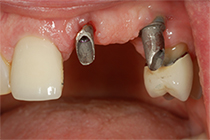
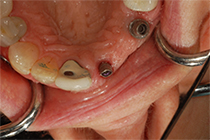
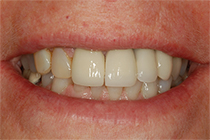
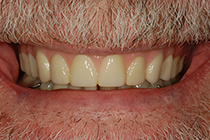
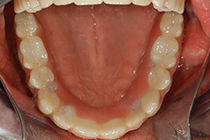
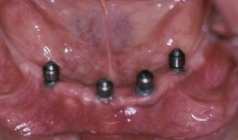
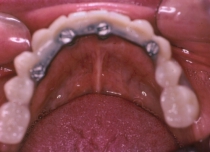
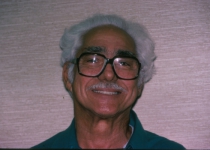
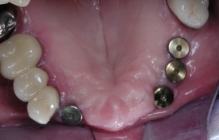
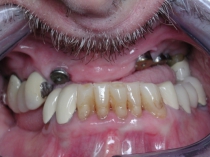

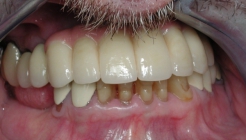
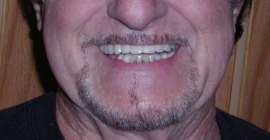




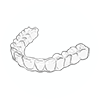




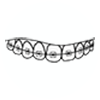


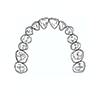






 770-923-3966
770-923-3966